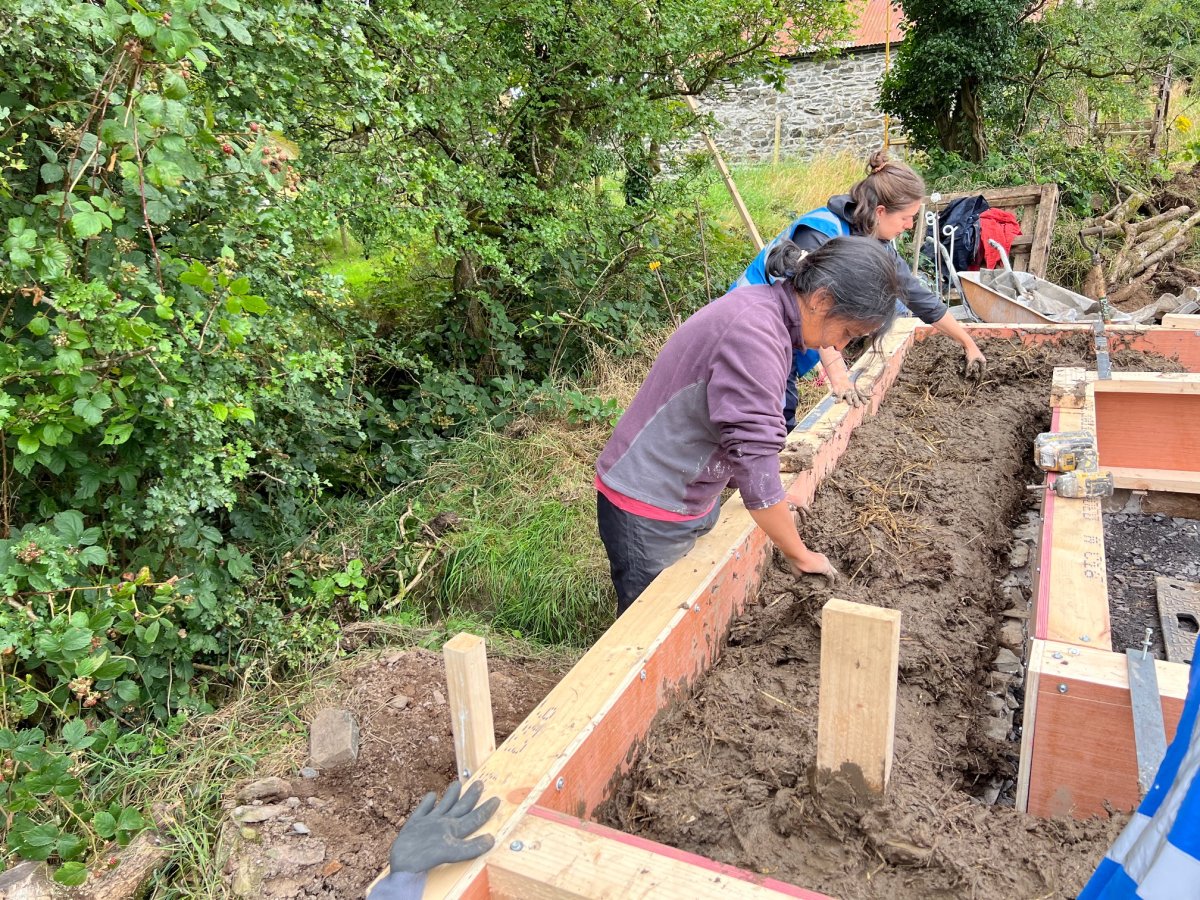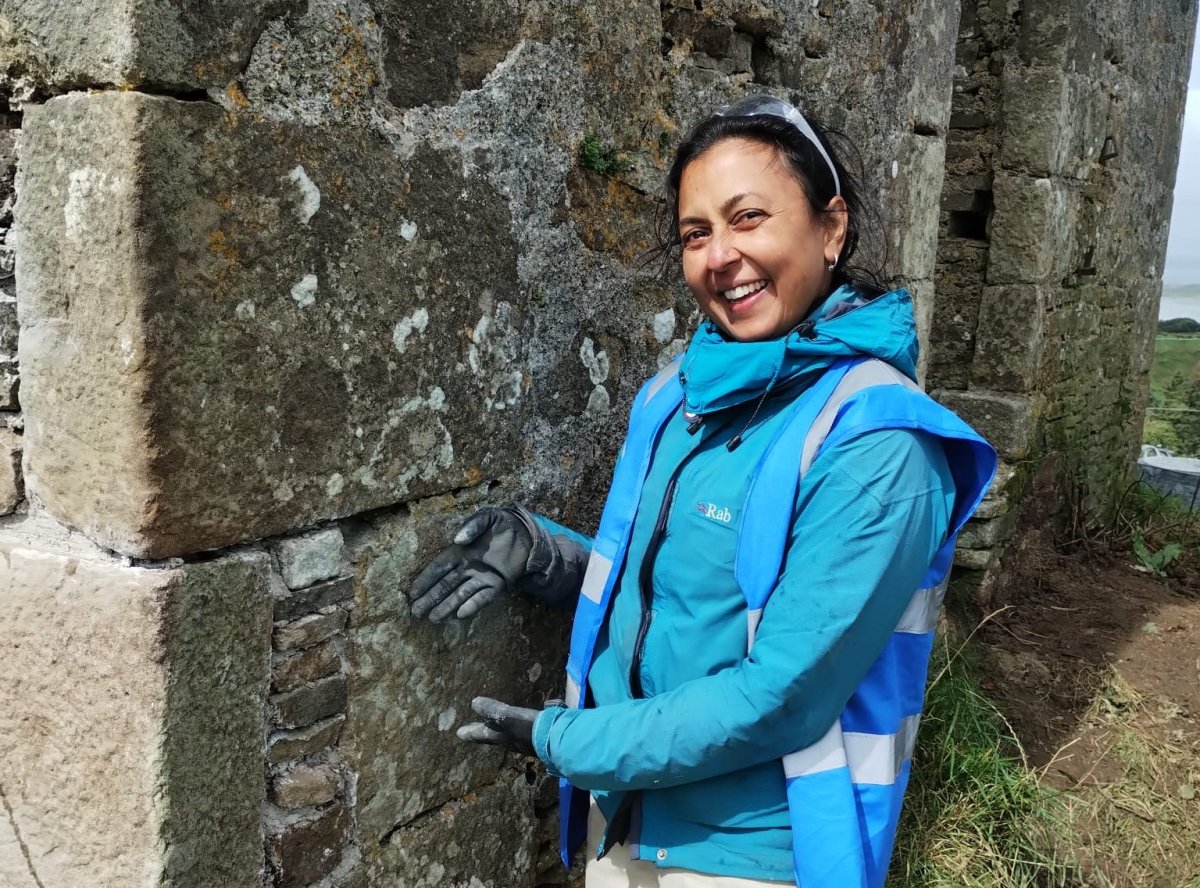Sarika Jhawar, architectural designer and 2024 Scholar, explores the issues facing thatching in Ireland and what has surprised her most about her experience on this journey so far.
Where did you wake up this morning?
Each morning begins with a moment of orientation to try and remember where you are as constant travel means waking up in a new place almost every day.
This morning, I woke in my tent in County Cavan, Ireland. We are in Ireland for about ten days with this year’s SPAB Fellows attending the SPAB Ireland Working Party at Rothaí Mill, County Cavan.
What have you been up to this week?
During the Working Party we’ve participated in taster sessions on carpentry (making new timber teeth for the mill wheel), lime pointing (no SPAB event is complete without a bit of lime!), cob construction, and glazing repair and maintenance.
The site consists of a disused mill and an adjacent house with plans to make the house habitable again and eventually bring the mill back into operation. The owner of Rothaí Mill, Chris, an ecologist, guided us through the site, illustrating how ecology is integrally woven into the project’s philosophy. Gaps were intentionally left in the walls to allow starlings to return and nest, bee boxes were integrated into the structure, and the wildlife on site (bats, and even moths) was carefully recorded to preserve their habitats. In contrast to most projects where ecology is merely a box to tick, here it is truly at the heart of the endeavor.

We had the pleasure of reconnecting with 2022 Fellow David McFerran whom we had met earlier in the week. David and his colleague Ivor had introduced us to the tradition of thatching in Ireland and discussed the challenges thatchers face today.
For instance, modern wheat crops, bred for high yield, are shorter and unsuitable for thatching. We also visited a field where the crop had failed due to an unusually wet summer, a stark reminder of the impacts of our changing climate.
What was your most memorable moment this week?
Learning about Irish vernacular building traditions was truly fascinating, particularly the different types of thatch used in traditional roofing, such as flax, rye, wheat and even marram grass. We learned that turf, or mountain sod, was frequently used as an underlay for thatch in traditional roofing. However, due to environmental protections, its commercial harvesting is no longer permitted. Similarly, the collection of marram grass is restricted to preserve coastal habitats. The use of thatch as a building material illustrates the intricate interrelationship between land, food, and shelter.
The buildings we’ve observed are constructed from natural, locally sourced materials that have withstood the test of time. The Scholarship has reinforced the reliability and longevity of these materials and as we transition away from fossil fuels, the need to use such materials will become increasingly critical.

Is the Scholarship how you expected?
Before starting the Scholarship, I worked alongside three Scholars who often shared stories of their experiences on the programme — the extraordinary people they met, the incredible places they visited, and the wealth of knowledge they gained.
While it is everything I had anticipated and hoped for, the experience has exceeded my expectations in ways words cannot fully capture. I have never learned so much in such a short period, with each day bringing new insights. Scholars frequently speak of the generosity of their hosts, but there’s something truly remarkable about how warmly people open their homes and make you feel genuinely welcome.
What would you say to someone thinking of applying for the Scholarship?
A recurring theme in Scholarship has been the shortage of skilled craftspeople and professionals to work with historic buildings. To achieve a sustainable future, we need to keep and use our existing buildings which demands individuals who possess the expertise and insight to work with them sensitively.
The Fellowship and Scholarship offer a unique opportunity to join a legacy of knowledgeable and skilled professionals and craftsmen, whose expertise is critically needed in today's world.
Applications are now open for the 2025 SPAB Scholarship. Find out more and apply by Tuesday 29 October, 5pm.

